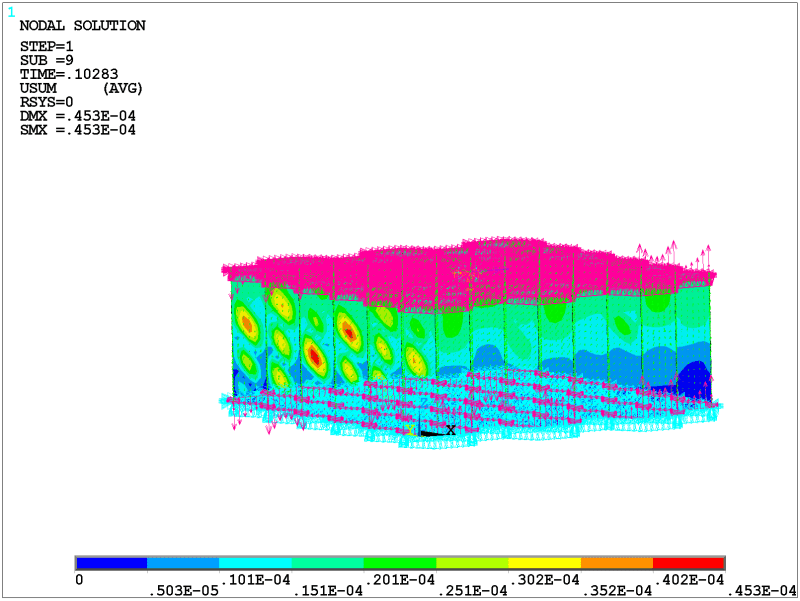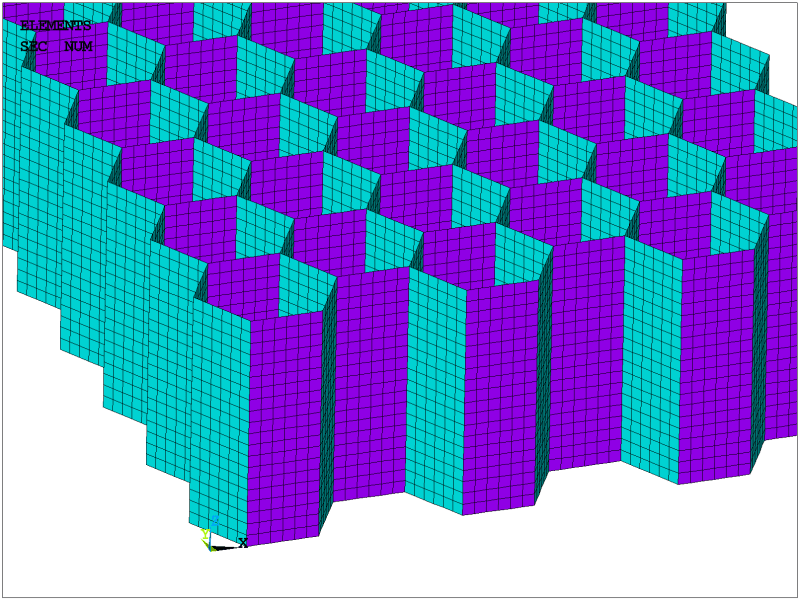Hello everyone,
I am modeling a structure with shell elements in mechanical APDL. My problem is that the solution stops due to excessive element distortion in very low displacements thus giving unwanted results. Elements on the edges show this problem but not on the inside.
I cannot find a way to overcome this problem.
At the top, I have created a rigid region; at the bottom, it is constrained at all translational degrees of freedom. Displacement control implemented at a MasterNode
Here is a photo of the model.

I am modeling a structure with shell elements in mechanical APDL. My problem is that the solution stops due to excessive element distortion in very low displacements thus giving unwanted results. Elements on the edges show this problem but not on the inside.
I cannot find a way to overcome this problem.
At the top, I have created a rigid region; at the bottom, it is constrained at all translational degrees of freedom. Displacement control implemented at a MasterNode
Here is a photo of the model.


